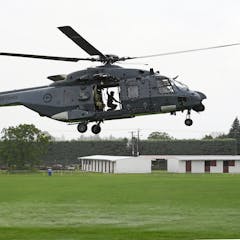
Articles on Anzac
Displaying 1 - 20 of 39 articles

Films about Australia’s efforts in WWI continue to exclude an Aboriginal presence – denying all of us access to their important stories.

With so many people grieving, the notion of doing so in public was seen as tasteless and vulgar. Funerals became smaller, people put on a brave face in public and fewer people wore black.

With General John Monash in command and four companies of US soldiers fighting alongside the Australians, the battle was a resounding success, taking just 93 minutes

Some of these men went from being indentured pearl divers to soldiers in Borneo. Other fled their home country as teenagers to earn money.

The new Australian war epic is a young man’s production in more than one sense of the word.

Global political unrest has highlighted the importance of a credible foreign policy. It may be time for the New Zealand government to consider the revitalisation of ANZAC and participation with AUKUS.

The Australian War memorial recently announced it will extend its exhibition to recognise the Frontier Wars, where Aboriginal resistance fighters fought in retaliation to massacres and other attacks.

The memorial promotes a powerful national origin story. The story of frontier warfare is also a powerful foundation story that deserves to be told.

We combed through historical records to shed light on the lives of these two soldiers to enhance our understanding of the complexity of the Australian military experience.

Although mateship is largely seen as a positive feature of Australian life, defining it is difficult and attempts to politicise it are generally frowned upon.

A short history of the Ex-Services Human Rights Association of Australia: a group of brave returned servicemen and women who protested the Vietnam War.

Anzac soldiers wrote poetry about body lice, shared treatment tips and experimented with new ways of bathing.

Amid the trauma and boredom of war, soldiers turned to reading — often magazines they wrote themselves.

Beautifully directed, powerfully acted, Peter Weir’s Gallipoli still captures the devastating emotional toll of war, 40 years after it first premiered.

What might the past offer us at this moment, and how will future generations reflect on this year? How will this present become the future’s past?

When the honour of Australia’s revered soldiers is questioned, so, too, is the national self-image. But war is an ugly business, and we pay a price for tethering it so tightly to our identity.

In Aboriginal and Torres Strait Islander communities, Anzac stories are often coloured by racism and ongoing injustices that negate the myth of Anzac ‘mateship’.

Army ration biscuits known as ‘Anzac tiles’ were durable but bland - as Australian war archives show, they served as stationery, Christmas cards and as the basis of art.

Since the end of the first world war, the Australian media has often reported that ‘the French’ care about, remember and even venerate the Anzacs. But is this true? And which French people?

Attacking Erdoğan’s original comments, Morrison told a news conference they were “highly offensive to Australians and highly reckless in this very sensitive environment”.
